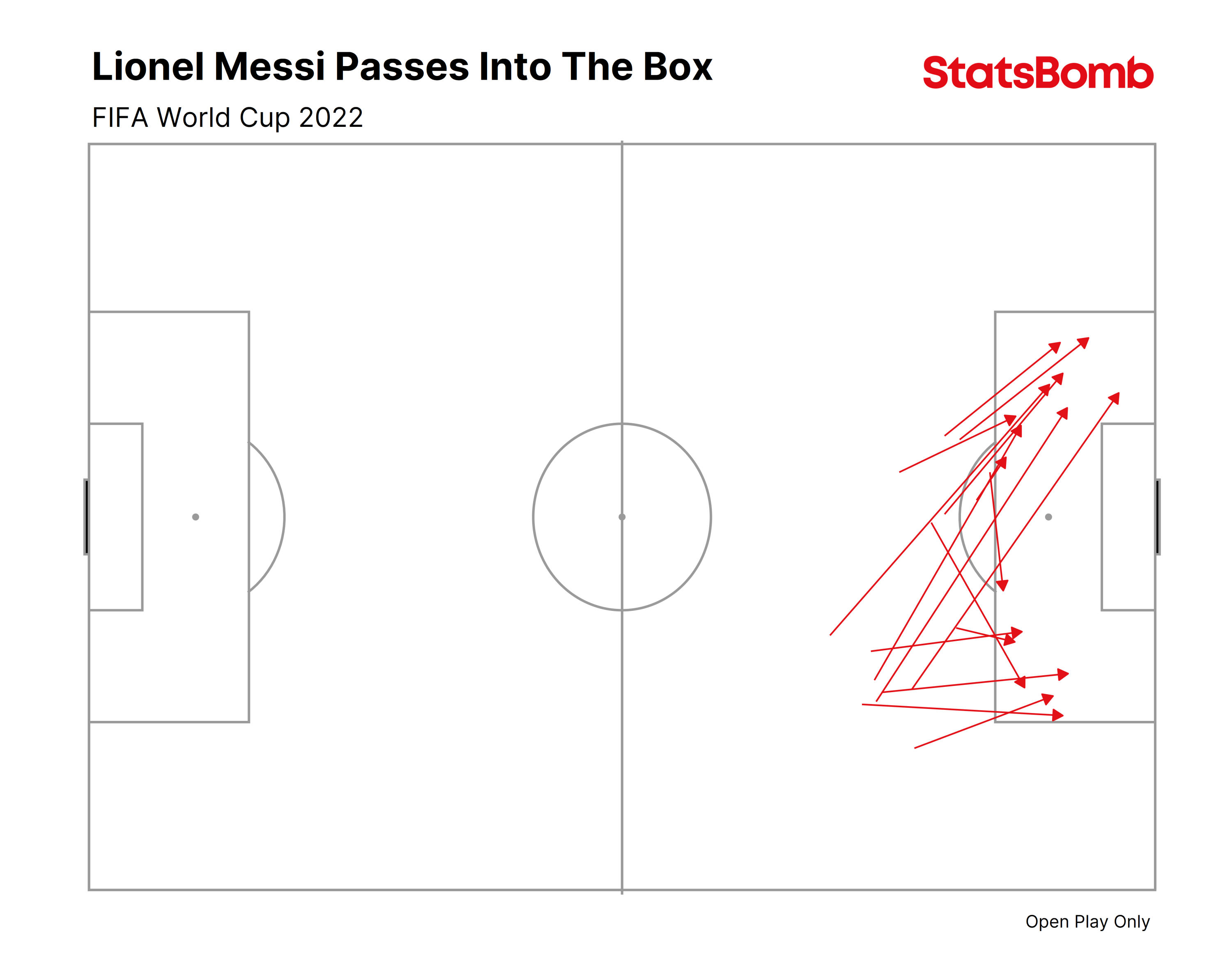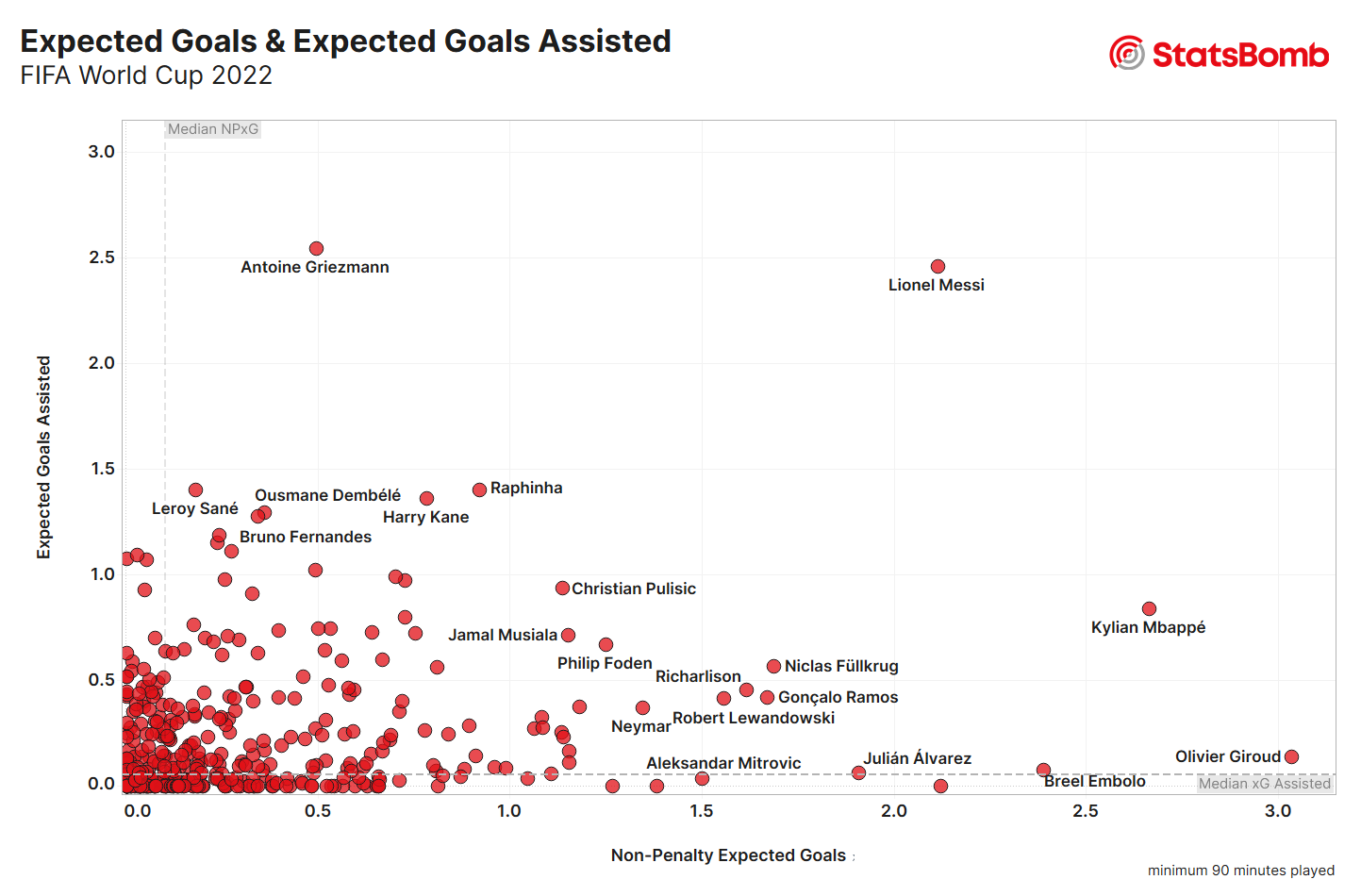It’s been 3.5 years since we released the Lionel Messi Data Biography. We wanted to provide analysts with a platform to perform longitudinal research and hone their data analysis skills, but, if we’re being really honest, the real reason for the release was because we knew it'd be really cool if we were all be able to plot Messi’s path to greatness. To document the greatest footballer that's ever lived. And now it’s complete: Lionel Messi is a World Cup winner.
Of course, the 2022 World Cup wasn’t all about Messi. It was about Argentina winning their first World Cup since 1986 with Diego Maradona. It was about France being a penalty shootout away from winning consecutive World Cups. The “passing of the torch” from Messi to Kylian Mbappé. Morocco’s run to the semi-finals. Waving goodbye to modern-era World Cup icons: Sergio Busquets, Luka Modrić, Luis Suárez, and Cristiano Ronaldo. And welcoming the new: Enzo Fernández, Pedri, Gavi, Jude Bellingham, Joško Gvardiol, and Jamal Musiala all made their World Cup debuts.
You can analyse all of the above in this free data release. Learning to code and demonstrating your data analytics and visualisation skills remains a consistent and reliable method of breaking into the industry. There are dozens of analysts and data scientists working at the elite level of the game who have used StatsBomb’s free data on their way up, whether it be the Messi Data Biography, the Women’s Super League data, or the more recent Men's EURO 2020 and Women’s EURO 2022 releases.
Accessing The Data
There are a few things you’ll need to know to access and work with the data.
One: this release will once again contain StatsBomb 360 data. 360 is tactical event data that includes a freeze frame containing every player in the picture around each event. The freeze frames add critical context and enable deeper and more meaningful analysis than is possible with standard event data, some of which we demonstrated recently in our Line-Breaking Passes and Ball Receipts In Space metrics launch article.
Two: installing the StatsBombR or StatsBombPy packages will make working with the data much easier. There's also our introductory guide to Working With StatsBomb Data In R, which we strongly advise you work through if you’re new to StatsBomb data or starting out on your coding journey. It'll also be useful to keep the StatsBomb data specification handy.
Follow the R Guide and you’ll soon be producing viz like this (and hopefully much better!):
Lastly, it’s important to note that if you intend to publish your work on social media – which we greatly encourage you to do if you want your skills to be noticed by professionals – then please do remember to abide by our user agreement and credit StatsBomb as your data source when doing so.
Our User Guide and Logos can be found in our media pack.
Access the data through our Github
We hope you enjoy working with the data.
Best of luck,
The StatsBomb Team





